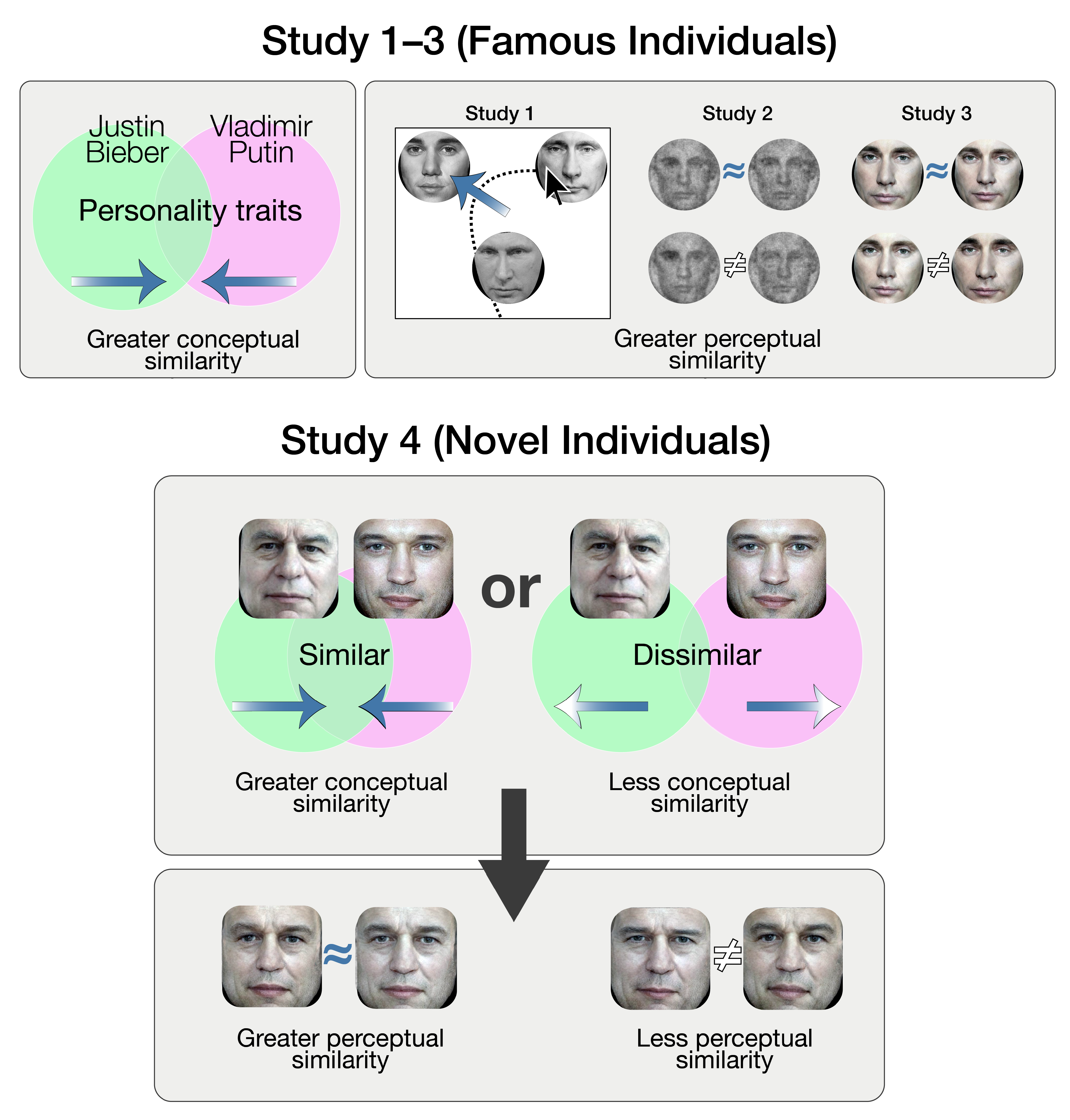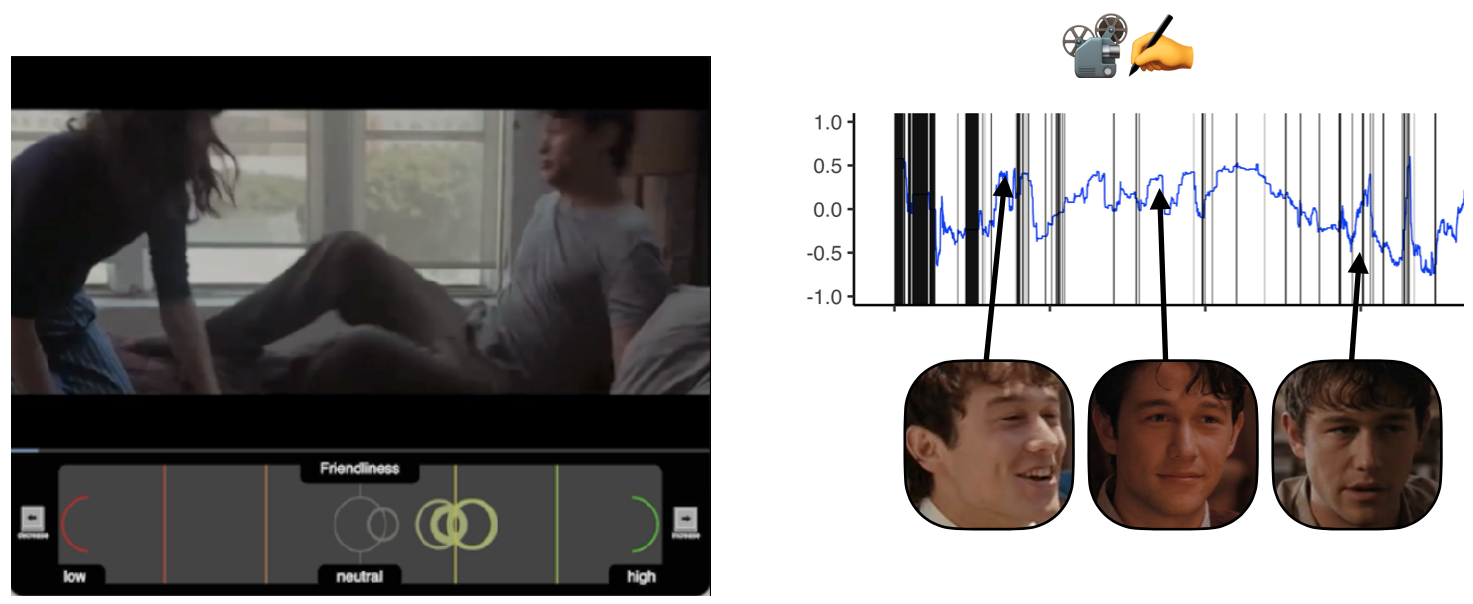Research Line 1:
Changes in Person Perception
Person perception undergoes a dynamic evolution, continually reshaped by new experiences and information that update our judgments about others. This ever-evolving process becomes crucial in our deeply interconnected world where the complexities of perceiving and interacting with others demand an in-depth comprehension of the underlying mechanisms involved in social impression formation and its continual updating.
A facet of my research in this line has been to unravel how people integrate new person knowledge. For instance, upon learning two strangers share similar personalities, individuals tend to perceive their faces as more similar than their actual physical resemblance would suggest (Oh et al., 2021 Cognition). This phenomenon sheds light on how our unique life experiences shape the core processes of person perception, like facial recognition.
A facet of my research in this line has been to unravel how people integrate new person knowledge. For instance, upon learning two strangers share similar personalities, individuals tend to perceive their faces as more similar than their actual physical resemblance would suggest (Oh et al., 2021 Cognition). This phenomenon sheds light on how our unique life experiences shape the core processes of person perception, like facial recognition.

Knowledge of a person’s personality can bias perception of a face’s identity toward an alternate identity that is not ostensibly related. For example, if Vladimir Putin and Justin Bieber (above) have more similar personalities in your mind, then they visually appear more similar to you as well.
Further, when you learn two novel individuals are
similar
in their personalities (below), you remember their faces as more similar to each other (compared to when you learn the two individuals were dissimilar in their personalities). (from Oh et al., 2021 Cognition)
Expanding upon previous research, an ongoing project focuses on formalizing naturalistic social interaction. In this endeavor, participants engage in casual conversations while being video recorded. Subsequently, they report their temporally evolving dynamic impressions of the other person. Through state-of-the-art statistical and computational learning models, this project structures conversations and analyzes the dynamic human interaction systematically. The main aim is to bridge the initial, often biased, person perception (e.g., those based on race and facial features) with an evolved understanding as more information is gathered through interaction. This research elucidates how a person’s representation shifts from being stereotype-based to a depiction of an individual with idiosyncratic traits.
By capturing the dynamics of real-life social interactions and understanding the evolution of person representation during these interactions, this research line aims to provide a more nuanced comprehension of the multifaceted process of person perception. Through such thorough investigations, the objective is to inch closer to a more accurate grasp of human interpersonal perceptions, thereby contributing to the broader understanding of social perception processes.

Using a continuous rating paradigm, participants altered their trait judgments over time as they watch naturalistic interactions between other individuals. Participants considerably changed their impressions of each character as they learned more about these individuals, but there was a high level of consensus across participants in how they changed their impressions of each character over time. The impressions of each character were tracked in multiple brain regions.